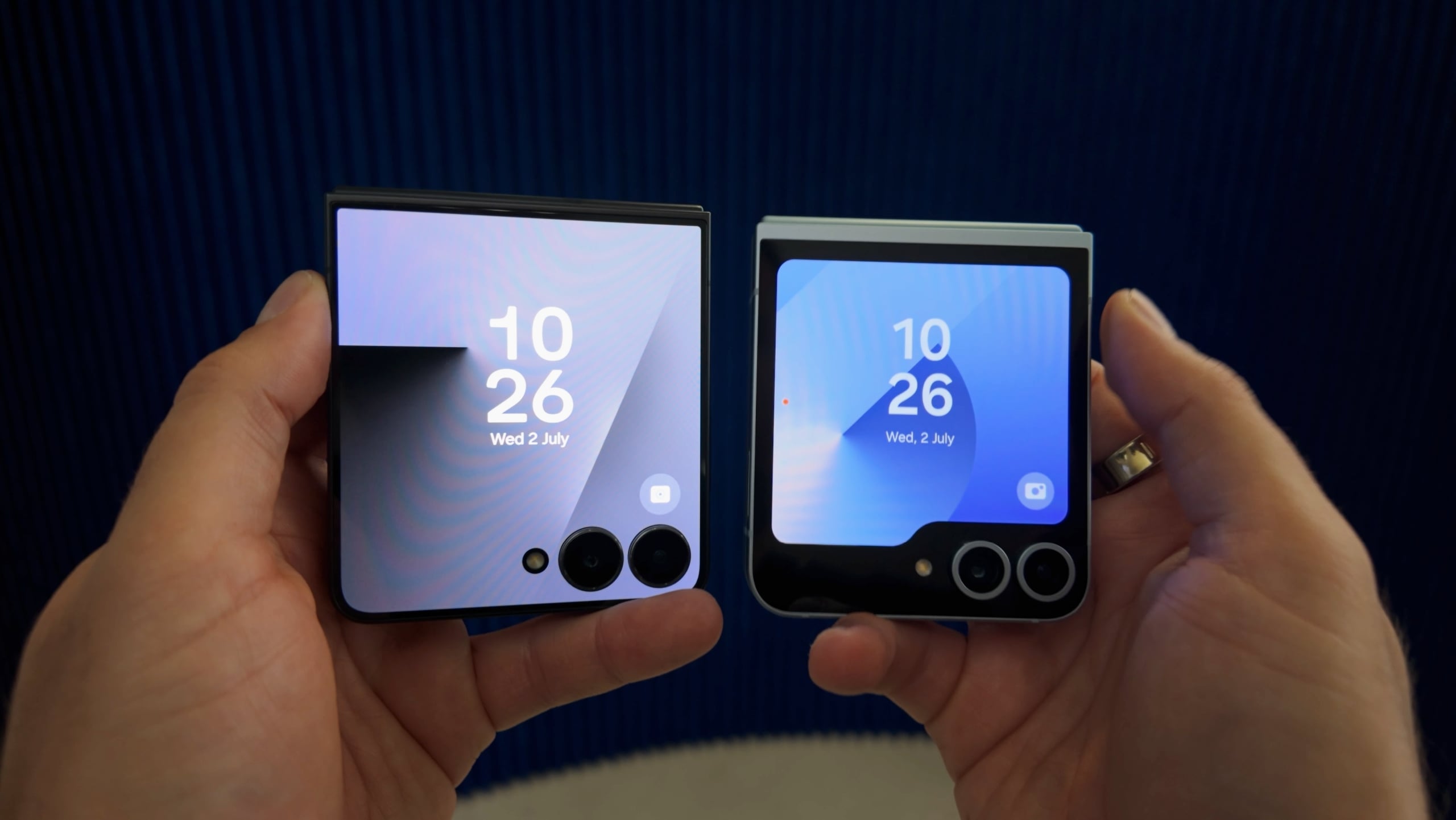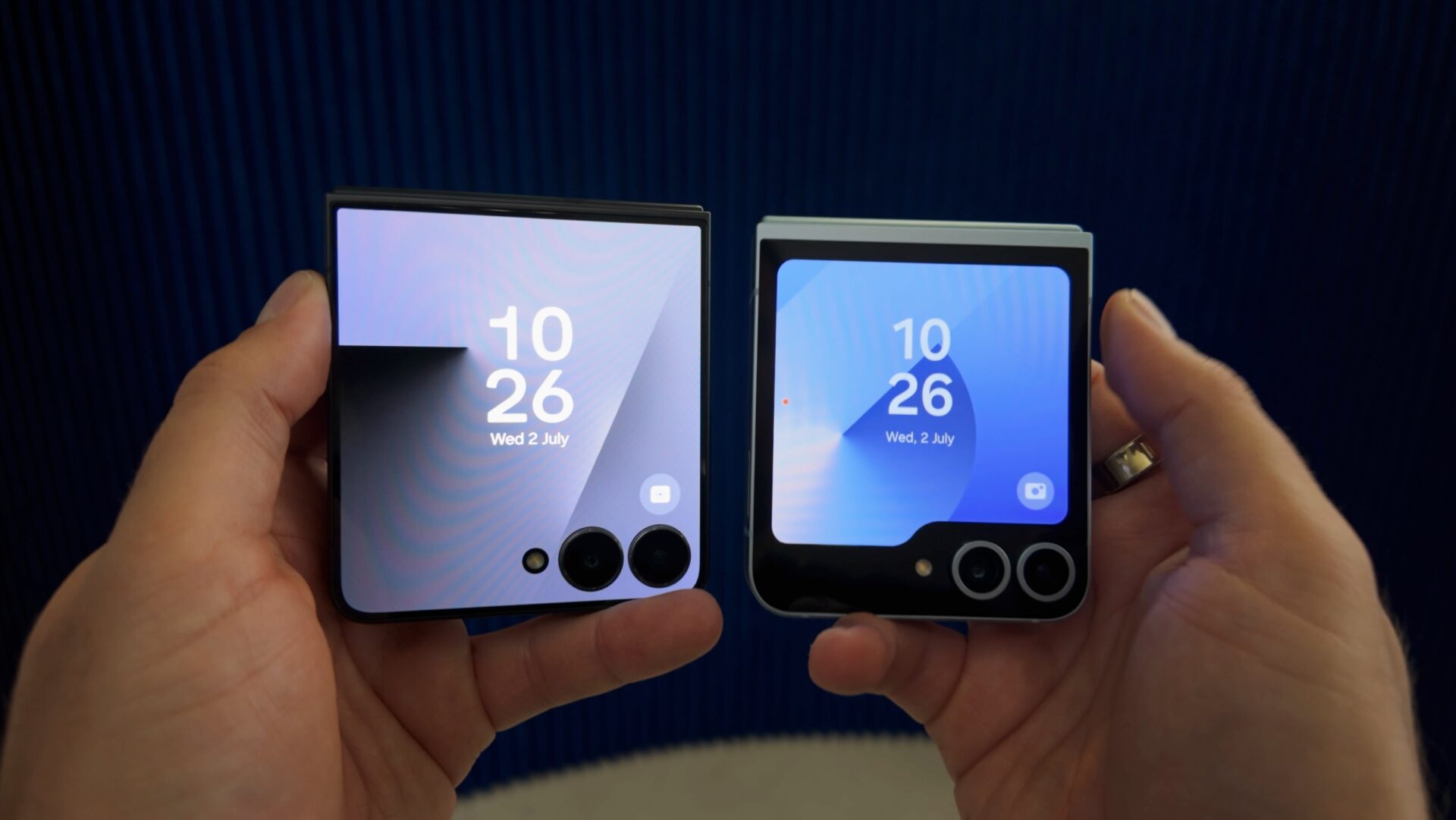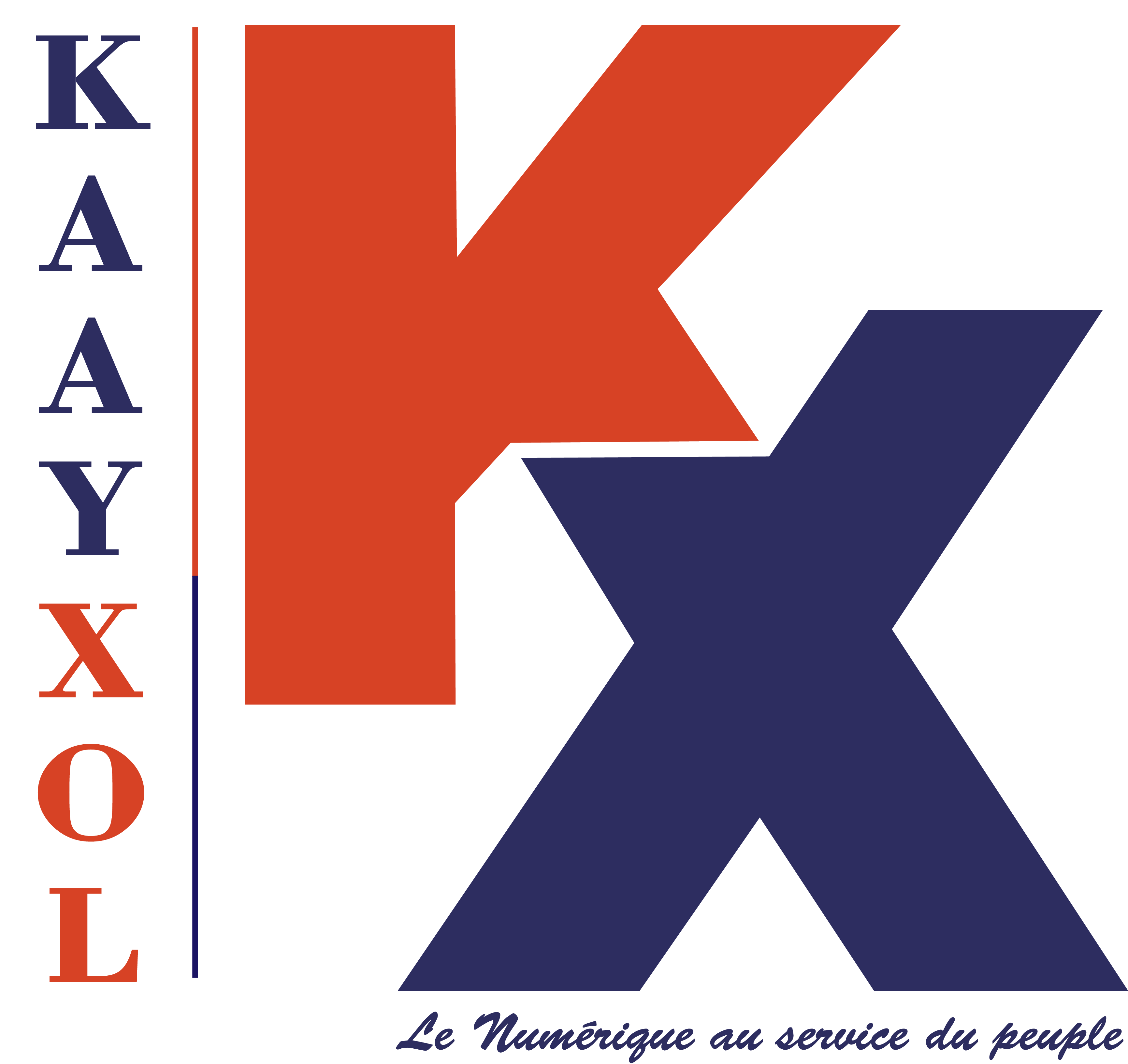Notifications
Posted by - Support KAAYXOL -
on - 7 hours ago -
Filed in - Technology -
-
16 Views - 0 Comments - 0 Likes - 0 Reviews

The evolution of the Galaxy Z Flip series consists of two phases: yearly incremental upgrades and significant design leaps once every few years. Excitingly enough, the Galaxy Z Flip series went through a massive change rather than an incremental upgrade at Unpacked 2025.
The new Galaxy Z Flip 7 is unlike any of its predecessors. Granted, it's still a foldable flip phone at its core, but it's different enough from the previous models that it is almost unrecognizable. Let's see how it compares to the Galaxy Z Flip 6.
In some ways, the Galaxy Z Flip 7 is identical to the Flip 6. It has an Armor Aluminum Frame, Corning Gorilla Glass Victus 2 protection at the back and cover screen, and an IP48 dust and water resistance rating. But this is where the design similarities end.
The Galaxy Z Flip 7 looks vastly different than the Flip 6. It's larger and features a 6.9-inch foldable screen along with an edge-to-edge 4.1-inch cover display. And despite the larger footprint, the Flip 7 is thinner and weighs roughly the same.

Samsung also developed a new and enhanced Armor FlexHinge for the Flip 7. It is thinner, with a restructured design and high-strength materials.
The redesigned hinge is more durable and smoother when folding and unfolding. But perhaps the best thing about it is that it makes the foldable display crease less visible.
As far as raw hardware specs go, the Galaxy Z Flip 7's foldable screen is more or less the same as the Flip 6's. It's a Foldable Dynamic LTPO AMOLED 2X panel with a refresh rate of 1Hz – 120Hz and 2,600 nits of peak brightness. The key difference is that the Galaxy Z Flip 7 has a larger 6.9-inch panel as opposed to a 6.7-inch one.
From an upgrade perspective, things are a lot more different on the other side of the phone. The Galaxy Z Flip 7 now has an edge-to-edge 4.1-inch cover screen that extends beyond the large main cameras. It looks next-gen, but whether the cameras will get in the way of the software experience is to be determined.


On the technical side, the cover screen now supports 120Hz and has the same brightness as the foldable panel, providing a more uniform experience across the two displays.
The Galaxy Z Flip 7 also allows users to access AI features from the cover screen, including Now Brief and Gemini/Gemini Live. Running any apps on the cover screen still requires Good Lock.
Even though the Galaxy Z Flip 7 is thinner, the larger footprint and redesigned hinge allowed Samsung to fit a larger battery. The Galaxy Z Flip 7 is equipped with a 4,300mAh unit instead of 4,000mAh. Charging speeds remain the same at 25W wired and 15W wireless.
Another significant change this year is that the Galaxy Z Flip 7 uses an Exynos chip instead of a Qualcomm solution. This is the first time the Galaxy Z Flip series doesn't use a Qualcomm Snapdragon SoC.
In theory, the new Exynos 2500 chip should be superior to the Flip 6's Snapdragon 8 Gen 3. The new Exynos 2500 is a 3nm rather than a 4nm chip and has two extra CPU cores.
We will test the Galaxy Z Flip 7 extensively for our upcoming review and tell you all about how it performs in the real world. Stay tuned for that.
On a final note regarding internal hardware, the Galaxy Z Flip 7 sports upgraded connectivity features.
Samsung handled OS versions differently this year. It released One UI 7 (based on Android 15) late and then rolled out One UI 8 (based on Android 16) early.
As such, even though the Galaxy Z Flip 7 was announced one year after the Galaxy Z Flip 6, it ships with an Android version that is two generations newer.
Since both the Galaxy Z Flip 7 and Galaxy Z Flip 6 offer support for up to seven OS upgrades, the new Galaxy Z Flip 7 will technically be supported up to Android 23 (tentative name) rather than Android 21. In this regard, the Flip 7 is two generations ahead of the Flip 6.


Obviously, the Galaxy Z Flip 7 offers a superior firmware experience thanks to One UI 8 and a deeper integration between the larger cover display and the software. However, one other notable change is the inclusion of Samsung DeX.
The Galaxy Z Flip 7 is the first in the series to support DeX — the desktop environment that can turn your phone into a pocket PC. It is limited to wireless DeX only, but it is something the Galaxy Z Flip 6 lacks altogether.
As we stated at the beginning of this article, the Galaxy Z Flip 7 is more than an incremental yearly upgrade with minimal design changes. It marks the beginning of a new chapter for the series, and in many ways, it is vastly superior to the Galaxy Z Flip 6.
Despite all these changes and upgrades, the Galaxy Z Flip 7 costs the same as the Flip 6 did at launch, i.e., $1,099 / £1,049 / €1,199. This makes it one of the most exciting Flip phones in recent memory.
If you want to upgrade your Galaxy Z Flip 6 to the new Galaxy Z Flip 7 through a trade-in, Samsung offers enhanced trade-in discounts of $600 (in the USA). You can exchange your Flip 6 and pre-order the Galaxy Z Flip 7 for only $499. Plus, you get a free storage upgrade from 256GB to 512GB.
For a closer look at the Galaxy Z Flip 7, check out our hands-on video from Unpacked and stay tuned for our upcoming full review.
The post Galaxy Z Flip 7 vs Flip 6: Samsung’s latest foldable is a big leap forward appeared first on SamMobile.

